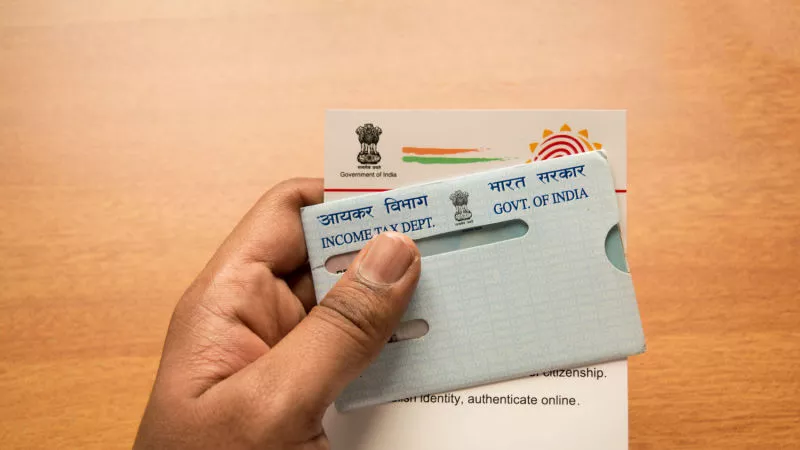
The term moonlighting was recently heard with a lot of buzz when Wipro fired about 300 of their employees on account of moonlighting. There have been a few other giants like Tech Mahindra that have said they are fine with their employees moonlighting while others have raised questions. But what is moonlighting exactly and is it a new concept? And how is it taxed in India? Given below are the details of the same.
What is moonlighting?
Moonlighting is the popular term used when an employee of a company takes up another employment whether part-time or on a contract basis with another employer in addition to his/her primary employment. This term was made popular in America when people started taking up second jobs in addition to their primary 9 to 5 jobs or day jobs. The second job is without the knowledge of the former employer often prompting them to take serious actions against such employees.
Also read: Financial essentials for freelancers
What is income from moonlighting?
The concept of moonlighting is not new and has been adopted by many employees for years. Moonlighting became more prominent during the pandemic when millions were faced with pay cuts and had to take up extra gigs to make up for the lost income. The rise in the work-from-home culture also led to an increase in moonlighting, especially in the IT sector where employees took up dual jobs to gain maximum advantage from their remote working situation.
This act of moonlighting was, however, highlighted and discussed in depth when Wipro fired their few hundred employees for moonlighting.
How is income from moonlighting taxed?
As far as Income Tax Act 1961 is concerned, there are no explicit provisions that agree or deny moonlighting in India. The income generated from moonlighting, however, is also subject to taxation under the provisions of the Income Tax Act. This income may be in the form of additional salary, professional fees, freelancing income, etc., and will be taxed accordingly. Such income will be subject to the TDS provisions too provided the company pays more than Rs. 30,000 to a person for a job on a contract basis or as professional fees.
The TDS provisions will also come into force if the total payments during the financial year are more than Rs. 1,00,000. Alternatively, if the moonlighting job is in the nature of the business or a profession and the net income is not more than Rs. 50,00,000, taxpayers can opt for presumptive taxation under Section 44ADA. Under this type of taxation, they will have to pay tax on an ad-hoc basis on 50% of their income and the balance will be considered to be utilized for expenses.
It is important to note that in the case of salary income the standard deduction of Rs. 50,000 can be claimed from only one employer and not multiple employers. Similarly, the deduction under section 80C will also be available under the blanket limit of Rs. 1,50,000.
Taxpayers will also have to file the requisite ITR to include the income from moonlighting as their taxable income. When the income from moonlighting is in the nature of salary income, ITR 1 has to be filed. Similarly, ITR 4 has to be filed in case of presumptive taxation for income under business or profession. For income from any contractual agreement or from any project, taxpayers will have to file ITR 3 to disclose their taxable income and pay tax on it accordingly.
Is moonlighting legal?
Most companies in India are either absolutely against their employees moonlighting or do not have a clear policy. Therefore in light of the recent increase in moonlighting cases, HR departments have started to scramble and get their policies clear. On the other hand, there have been opposing judgments in the Supreme Court (in 1983) as well as Mumbai and Punjab High Court (in 2018 and 2016 respectively) where the employer’s right to terminate the employee moonlighting was denied or upheld. Therefore, in this context, the employment agreement should be taken into consideration. If the agreement expressly states that dual employment will not be permitted, the same will not be acceptable or tenable under Indian Laws.
Conclusion
Moonlighting, although not a new concept, has been discussed widely not only in India but also across the world. With job loss and pay cuts being a harsh reality today, employees more often than not are forced to find alternative income sources along with their primary ones. Industry giants like Wipro have proved that they are severely against their employees moonlighting whereas companies like Infosys have given their employees a simple warning. Tech Mahindra has gone a step further to side with the employees citing the changes and needs of our world and adopting them.
FAQs
Yes. Income from any source is taxable in India whether the source is a primary or secondary source of employment.
Due to the cohesive manner in which all important documents like PAN cards and Aadhar cards are linked, it is not always possible for taxpayers to hide their income from moonlighting as it will most definitely be included in Form 26AS. The employer also will have to deduct TDS and pay the balance income as per provisions of the Income Tax Act.
Furthermore, if they deposit an amount from the salary in the EPF account, dual credits to such accounts will raise red flags.
If there is an agreement between the employee and the employer where it is expressly mentioned that taking up a new job with any direct or indirect competition will violate the terms of the agreement, in such cases, moonlighting can be deemed to be illegal.
No. Cases of moonlighting are not confined to India alone, they are found in different countries across the globe.


























